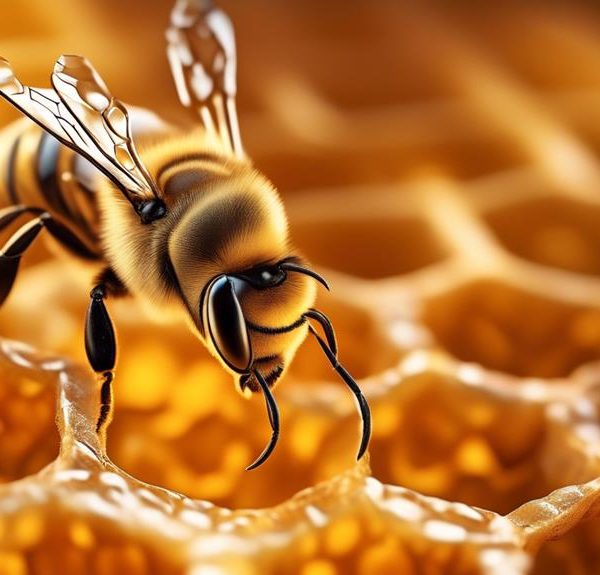Wonder why bee hives are hexagonal? Discover the fascinating blend of geometry, natural selection, and evolutionary economics behind this natural marvel.
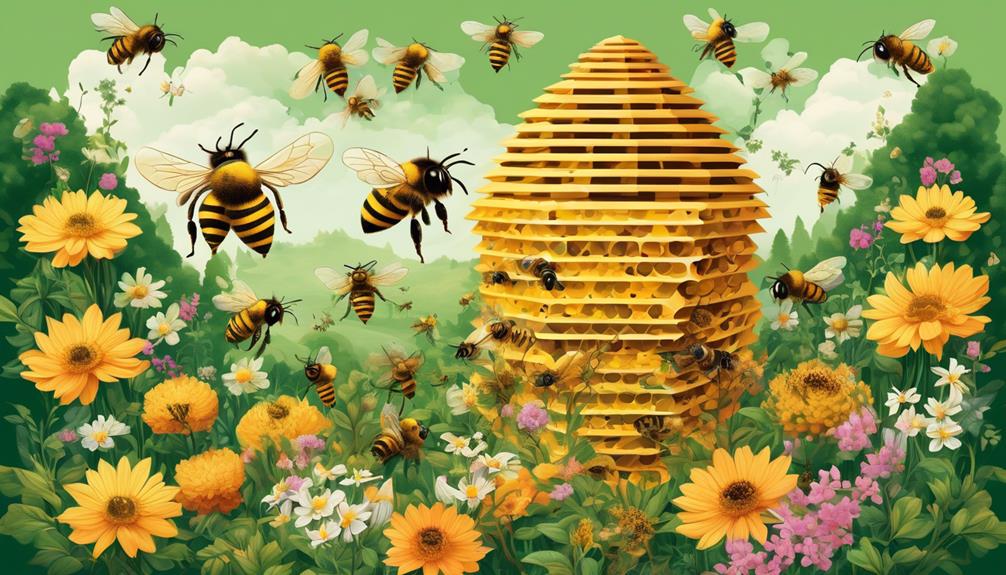
Why Are Bee Hives Hexagonal
You might not be aware, but the hexagonal structure of bee hives isn't just a fascinating coincidence; it's a display of nature's mathematical genius. When you observe a beehive, you're seeing an efficient, space-saving design that's been perfected over millions of years.
Bees, as tiny creatures, have a remarkable knack for architectural design, constructing their hives in the shape of hexagons rather than circles or squares. But why hexagons? What makes this shape so special in the world of bees?
The answer is a compelling blend of geometry, natural selection, and, believe it or not, pure evolutionary economics. Curious to know more? Let's explore this intriguing subject together.
Key Takeaways
- Bees use hexagonal cells in their hives because it allows them to maximize space and storage efficiency while minimizing the use of building materials.
- The hexagonal shape of the cells provides strength, stability, and thermal efficiency to the hive.
- Hexagonal hives facilitate better heat regulation and contribute to the overall energy efficiency of the colony.
- The geometric efficiency of the hexagonal shape significantly enhances productivity in terms of honey storage, pollen storage, and larvae development.
Understanding Bees and Their Behaviour

To truly comprehend the intricacies of the hexagonal pattern in bee hives, it's crucial to delve into the understanding of bees and their behaviour. You see, bees aren't just simple insects. They're social creatures that function in a complex, highly organized society, where each bee has a specific role to play.
Worker bees, for instance, are responsible for constructing the hive. They secrete wax from special glands, sculpting it into perfect hexagons. It's a fascinating process, one that's driven by instinct and collective intelligence. The hexagonal design isn't random – it's a marvel of engineering, offering maximum storage space with minimum wax used.
Bees also communicate in intricate ways, using a series of movements known as the “waggle dance” to share information about food sources. This implies they're capable of abstract thought and spatial awareness, which could play a part in the hive's hexagonal design.
The Geometry of Hexagons
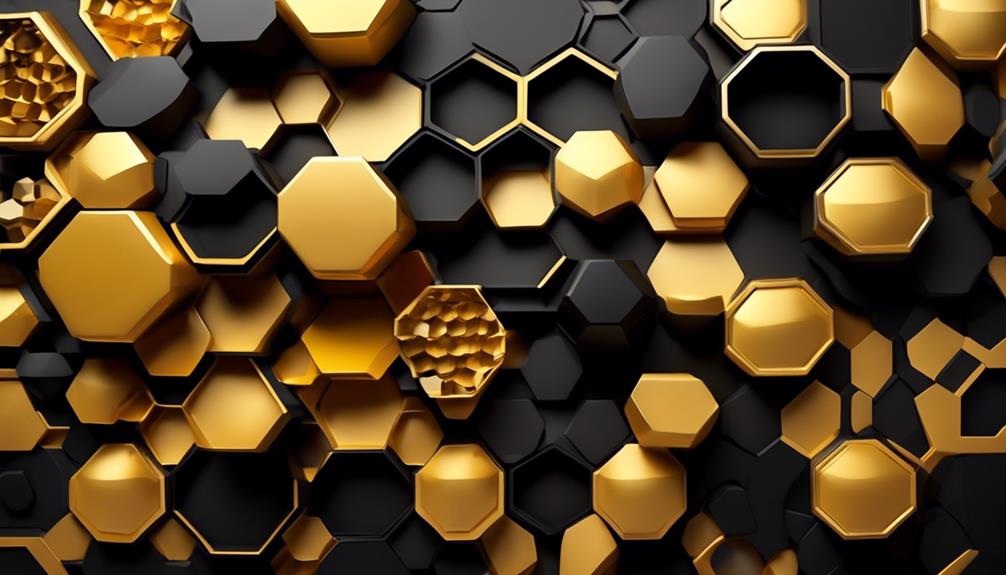
Building on the bees' sophisticated behaviour, let's now examine why hexagons, in particular, are the shape of choice in hive construction. You see, the geometry of hexagons is incredibly efficient. This six-sided polygon tesselates perfectly, meaning it can fill a plane with no gaps. This is crucial for the bees as it means they can make full use of the available space, wasting none.
Moreover, compared to other shapes, the hexagon provides the maximum amount of space with the least amount of building material. To put it simply, it's the most economical shape for the bees. They're able to store more honey while using less wax to construct each cell. And since producing wax is energy-intensive for bees, this efficiency is a significant survival advantage.
Efficiency of Hexagonal Structures
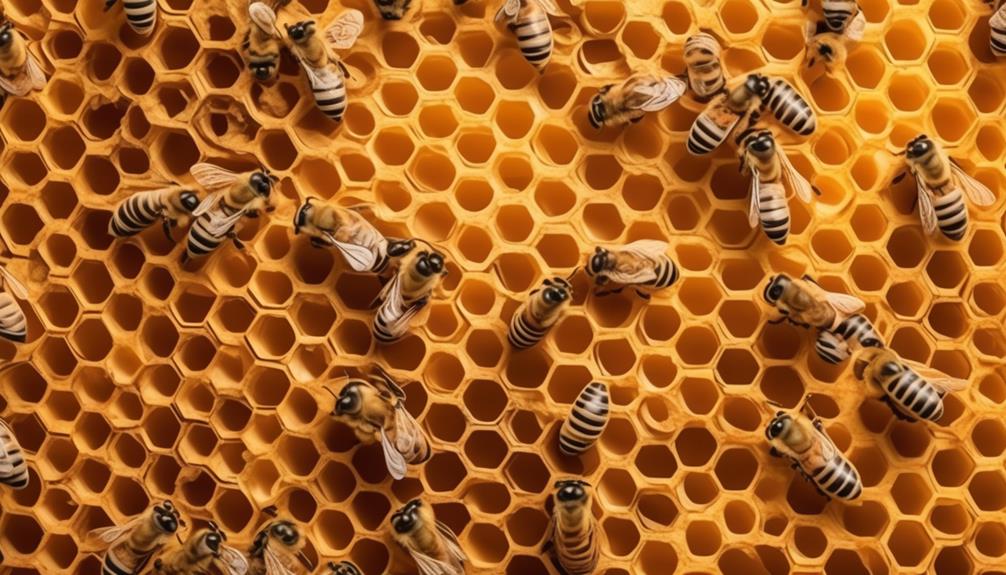
You'll find that the efficiency of hexagonal structures goes beyond just bee hives, playing a significant role in various natural and man-made designs due to their unique properties. Hexagons are incredibly efficient because they cover a large surface area with minimal material. This makes them cost-effective in terms of resources and energy, a vital factor in nature where resources are often limited.
Take honeybees for instance. They build their hives with hexagonal cells because this shape uses less wax than any other and still provides the maximum possible space for honey storage. It's a matter of survival for them.
This principle also applies in the human world. Engineers often employ hexagonal designs to create efficient, strong structures with the least amount of material. For instance, you'll find hexagonal patterns in the design of certain satellites' solar arrays where each panel is a hexagon. These structures are lightweight yet robust, able to withstand the harsh conditions of space while maintaining optimal functionality.
Evolutionary Advantages of Hexagonal Hives
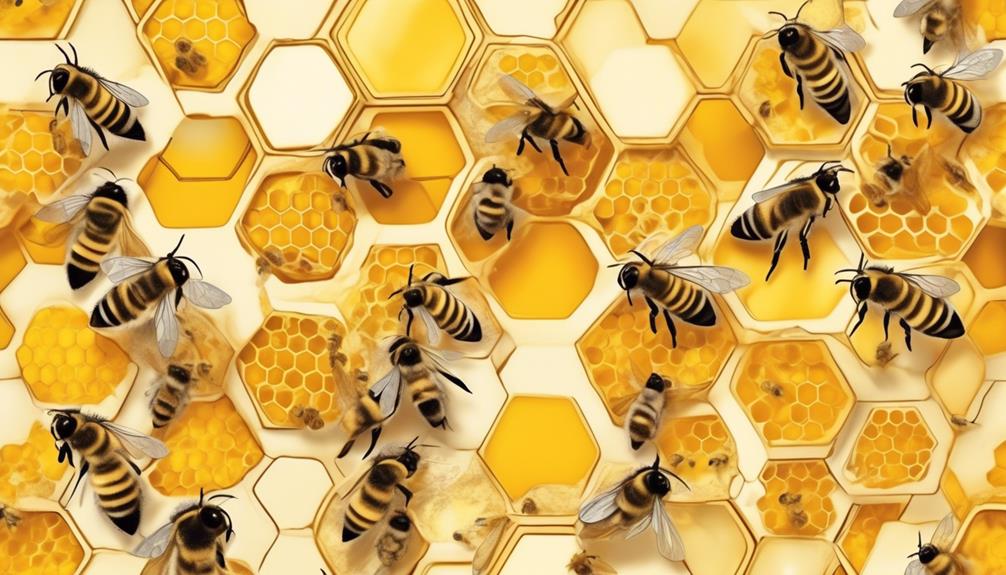
Diving into the evolutionary benefits of hexagonal hives, it's clear that nature's choice of this unique geometric structure isn't mere coincidence, but a fascinating adaptation developed over millions of years. Bees, like other creatures, are driven by survival and efficiency. The hexagonal design of their hives provides several key evolutionary advantages that have allowed these insects to thrive.
Firstly, the hexagon is an incredibly efficient shape. It allows bees to maximize their use of space without wasting any materials. This means they can store more honey, pollen, and larvae in a smaller space, which is crucial for their survival, especially during harsh winter months.
Secondly, the hexagonal structure provides strength and stability. It's a sturdy design that can withstand external pressures and maintain its integrity even when part of the hive is damaged or removed. This resilience is vital for protecting the hive's precious contents.
Lastly, the shape facilitates better heat regulation. The uniformity of hexagonal cells allows for an even distribution of heat within the hive, ensuring a stable temperature for developing larvae. This thermal efficiency also means less energy is wasted on heating the hive, making the colony more energy-efficient overall.
These evolutionary advantages demonstrate why hexagonal hives have become the norm in bee colonies and highlight the remarkable adaptability of these industrious insects.
Impact on Beehive Productivity
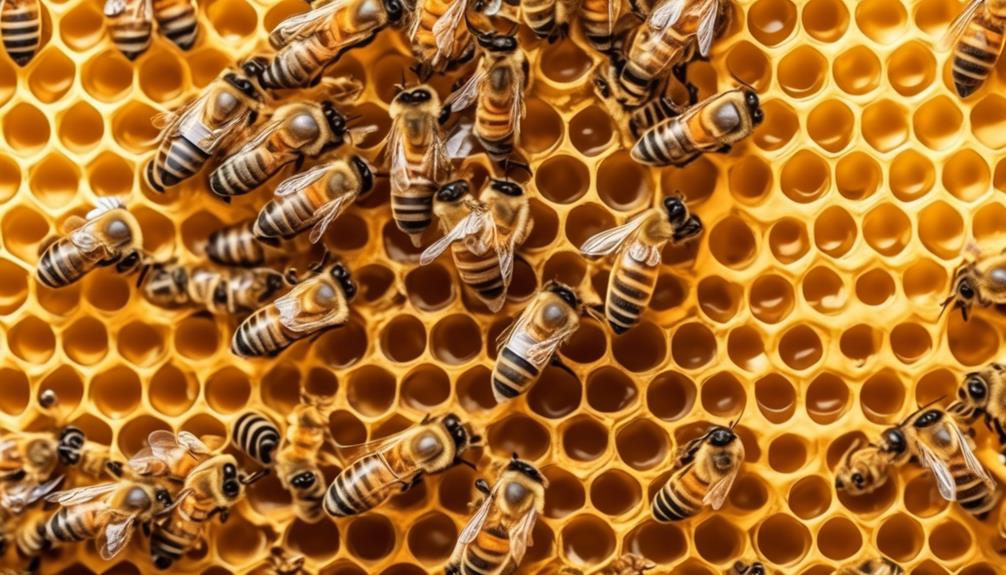
In understanding the impact of hexagonal hives on productivity, it's crucial to consider how this shape directly contributes to the bees' ability to produce honey, breed, and thrive.
The hexagonal pattern provides maximum efficiency for honey storage. It allows the bees to fill the space without any gaps, resulting in a compact, well-organized hive. This structure isn't just an architectural marvel; it's a testament to nature's ingenuity in optimizing resources.
The individual hexagonal cells serve as multifunctional chambers, where bees store honey, pollen, and even house their young. This functional division of space boosts productivity, as bees don't waste time and energy navigating through a complex layout. Everything is within reach, and each bee knows exactly where to go.
Furthermore, the hexagonal design promotes effective temperature regulation, crucial for honey production and larvae development. The hive's layout allows for easy circulation of warm air, maintaining an optimal temperature throughout.
In essence, the hexagonal shape of bee hives isn't a mere aesthetic choice. It's a strategic, practical design that significantly enhances productivity, leading to a thriving, successful colony. From honey production to breeding, every aspect of bee life benefits from this geometric efficiency.
Frequently Asked Questions
What Other Shapes Have Bees Tried Before Settling on Hexagonal Hives?
Actually, bees haven't tried other shapes before settling on hexagonal hives. They instinctively construct hexagonal cells because this shape uses the least amount of wax while providing the maximum amount of space.
It's not a trial-and-error process, but a naturally efficient design honed by evolution. This pattern, known as 'honeycomb,' is a testament to the bees' incredible instinct for creating the most effective structures.
Are There Any Other Animals or Insects That Use Hexagonal Structures Like Bees?
You're curious if other creatures use hexagonal structures like bees, aren't you?
Well, the answer's no. Bees are unique in this regard.
Their hexagonal hive structure is a marvel of engineering efficiency, but no other animals or insects have been observed using this design in their dwellings or creations.
This is likely due to the specific combination of factors that make the hexagon advantageous for bees, which doesn't necessarily apply to other species.
How Does Changing Climate Conditions Affect the Construction of Bee Hives?
Changing climate conditions can greatly impact the construction of bee hives. As you know, bees depend on temperature to maintain hive health. Extreme heat or cold can disrupt their activities, including hive building.
For instance, warmer temperatures might lead to faster wax production, altering hive structure. On the other hand, cold can slow down or halt construction.
Can Human-Made Bee Hives, Which Are Not Hexagonal, Affect the Behaviour of Bees?
Absolutely, the shape of a hive can influence bee behavior. Bees naturally prefer the hexagonal structure, which maximizes space and efficiency.
If you're providing a non-hexagonal hive, they may be less efficient in honey production and it may even stress the colony. So, while they'll still use the hive you provide, it's not their ideal setup.
It's best to mimic their natural environment as closely as possible for their health and productivity.
What Are the Potential Consequences if Bees Were to Suddenly Change the Shape of Their Hives From Hexagonal to Another Shape?
If bees were to change their hive shape, it'd likely disrupt their efficiency. Bees have evolved to build hexagonal hives because this shape uses the least amount of wax while providing the most storage space. A different shape could require more resources and offer less room, potentially impacting the hive's survival.
It could also affect their navigation and communication, possibly leading to disorganization and slower honey production.
Conclusion
So, you see, bees aren't just buzzing around aimlessly. They're employing complex geometry, specifically hexagons, to create efficient, resource-saving hives.
This evolutionary advantage not only optimizes space but also boosts hive productivity. By understanding the science behind hexagonal hives, we appreciate bees' fascinating and intricate world, highlighting how much there's yet to learn from these industrious little insects.
Indeed, bees showcase nature's brilliance in the most remarkable, tiny details.


